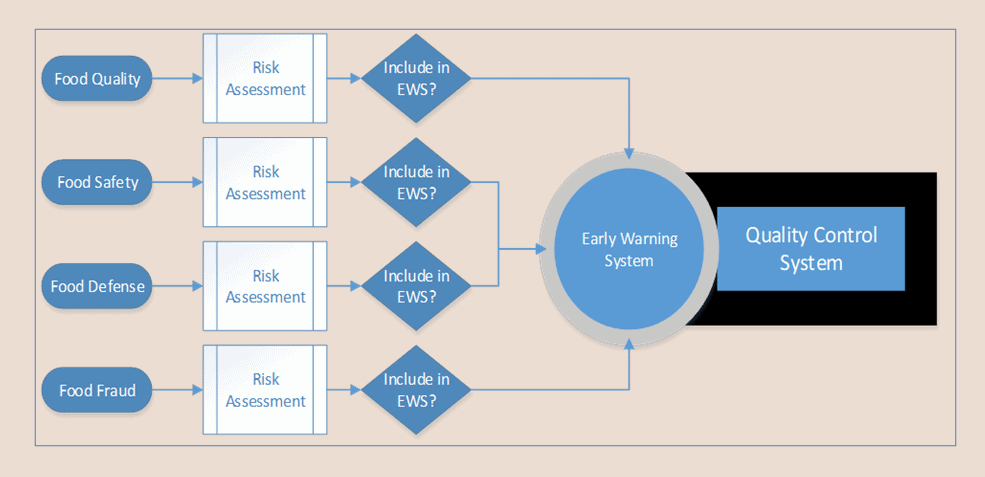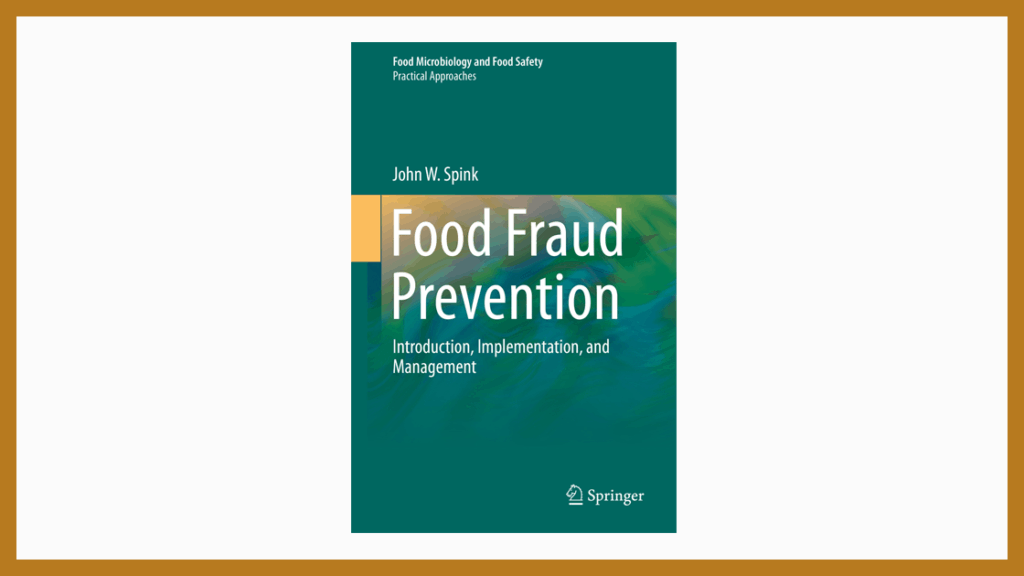Attached is an excerpt from my 2019 Food Fraud Prevention textbook that reviews early warning systems compared to just rapid detection of an incident. COVID-19 created even more system weakness due to massive and novel supply chain disruptions. Waiting for an incident to occur, and rapidly responding, is important but it is not proactive and it is not prevention. With a true early warning system, a single event could be used to react to root causes and not only incidents.
Link to the book publisher: https://www.springer.com/us/book/9781493996193?utm_medium=affiliate&utm_source=commission_junction_authors&utm_campaign=3_nsn6445_deeplink_PID9101220&utm_content=deeplink
The best food fraud prevention systems identify the system weaknesses (e.g., melamine was used to deceive protein quality level assessments) as they are occurring, not only after incidents are found in the marketplace (e.g., responding to illnesses and deaths). The best early warning systems gather data and information from a wide range of sources. The most efficient system combines many risk assessments into one monitoring and response system (e.g., using the three GFSI required assessments of HACCP for food safety, TACCP for food defense, and VACCP for food fraud).
Excerpt from Food Fraud Prevention textbook (Spink, 2019):
An Early Warning System as Prevention for Melamine Fraud? …or Rapid Detection of an Illness?
After the original melamine food fraud incident in milk powder and then in pet food, there was a sense that the food safety system “worked” and was proactive. These were “intervention” and “response,” not “prevention.” After thinking about this, the trigger for the “Early Warning System” to look for melamine was the illness and death. So, there was a rapid alert that there was a problem, which was an early warning of a food safety incident, not a warning of a new vulnerability that rose to the level of now being a hazard that requires a preventive control.
To be fair to the food safety legacy systems, it is essential to define the scope and fit for purpose of the “Early Warning System.” Many systems were implemented to detect a chemical contaminant or pathogen that naturally occurs in the product. These systems were not originally designed or intended to monitor other activities such as food fraud or food defense attacks. The great opportunity is that an Early Warning System tracking and response system is already in place and functioning. There is an efficiency in integrating food fraud prevention activities into the current functional system.
An Early Warning System is critical to the rapid detection of all health hazard or fraudulent activity. To be efficient, a Food Fraud Prevention Strategy should inform the Early Warning System to know what to look for. Moreover, to actually lead to prevention of the fraud act, the fraudsters must know the prevention system is in place. Fraudsters just need to know that the supply chain monitoring is in place for “melamine”—and whatever else might be a concern—to dissuade the fraudulent act.
In Fig. 3.4, there are separate determinations or thresholds of “unacceptable risks” for food quality, food safety, food fraud, and food defense. If a single threshold and general response were defined—such as a reported illness in a government product recall alert—the model would be an “ill-fitting tool.” For example, the US FDA CARVER+Shock food defense assessment system has a factor that prioritizes the “shock” of an incident. While addressing package tampering is critical, based on this assessment system, the 1986 Tylenol tampering incident that changed the entire US packaging laws would not have been prioritized. The “shock” would have been a low rank of 1 or 2 out of 10 points on the CARVER+Shock scale, and thus other higher-ranking threats would have been clearly prioritized. Even after the incident occurred, the statistics and data on the Tylenol incident would still be prioritized in the CARVER+Shock scale as very low.
With this organizational structure in the figure, the food safety Early Warning System methods and procedures can be utilized to address multiple types of risks. The food safety Early Warning System then broadens to really becoming a food quality vulnerability Early Warning System.

Figure 3.4: Contaminant Early Warning System Structure of Multiple Types of Risks and Implementation in a Quality Control System
The most crucial insight from the excerpt is that using one early warning system is the most efficient and optimal response… BUT ONLY if it includes fit-for-purpose risk assessments. For example, using a food safety risk assessment to judge a food defense risk will not correctly identify intolerable risks. If you consider all the needs, then you can create an optimal EWS.
Reference:

